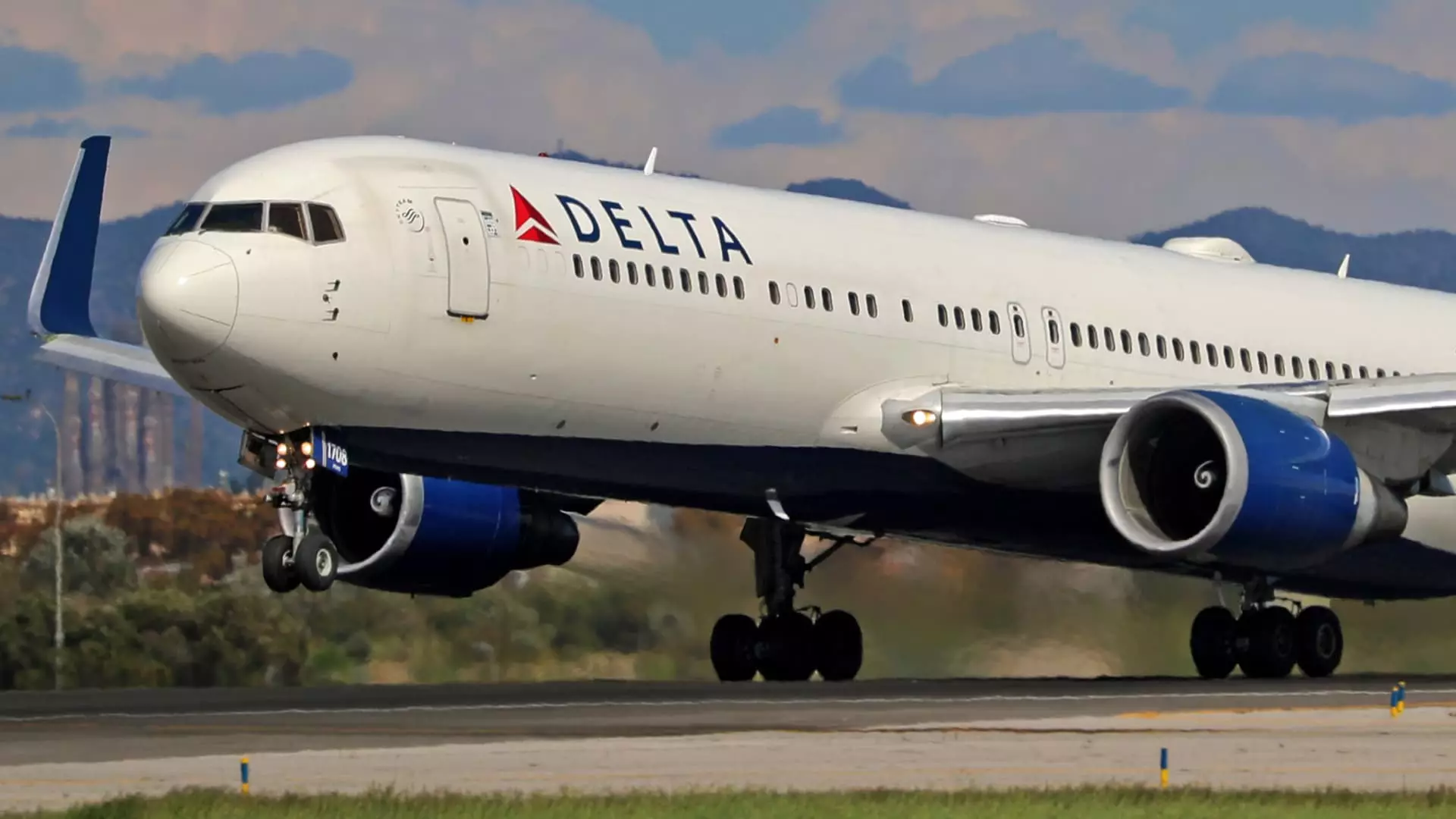The airline industry’s golden era seems to be rapidly fading, and alarming trends are emerging that suggest a catastrophic downturn might be looming on the horizon. Analysts point to numerous warning signs: reduced international travel from Canada, an unexpected drop in demand for transatlantic flights, an ominous wave of government layoffs, and rising tariffs. These factors all converge to form a dismal outlook for an industry that has seen its fair share of ups and downs, particularly in the wake of the pandemic. The once-reliable consumer enthusiasm for travel has hit a snag, and it could spell disaster for businesses heavily reliant on passenger numbers.
The latest analyses indicate that U.S. airlines are likely to downgrade their earnings forecasts, revealing a troubling reality. For example, Delta Air Lines, a company that enjoyed immense profitability during their peak years, was forced to lower its first-quarter projections due to weak bookings from both corporate and leisure travelers. American Airlines and Southwest Airlines followed suit, adjusting their outlooks downward as well. In retrospect, these disappointing forecasts signal a burgeoning skepticism among consumers who had formerly prioritized travel over other expenses even in inflationary times.
Increased Tariffs and Their Dire Implications
One might ask: what role do governmental policies play in this namely turmoil? Well, amidst a raft of challenges, tariffs imposed by the Trump administration have added a new layer of complexity to an already fragile landscape. With tariffs on flights reaching 10%, it is hard to deny that governmental policy decisions are exacerbating an already precarious situation. They not only elevate operational costs but also erode consumer confidence at a time when the necessary consumer enthusiasm is critical to the industry’s survival.
The repercussions of these tariffs stretch beyond mere fiscal implications. The psychological impact on potential travelers is profound. The added expense may discourage bookings and precipitate a broader hesitance in travel-related spending, creating a feedback loop that spirals downwards. Airlines experience not only a reduction in customers but also compounded losses as they take an involuntary hit to their bottom lines.
The Dismal Performance of Airline Stocks
When analyzing the current state of airline stocks, the numbers reveal a deeply concerning narrative. Delta has seen its stock drop by over 38%, while American Airlines and United Airlines have plummeted by 45% and 40%, respectively, so far this year. This colossal downturn is not just a short-term blip; it signifies a shift in sentiment across the travel sector that warrants major concern. Investors may soon find themselves grappling with a fundamental question: has demand truly dwindled, or is this merely a temporary setback?
As the first airline to release its quarterly results, Delta’s report will inevitably serve as a barometer for the industry’s health. However, the stark reality is that analysts have been lowering their price targets and downgrading ratings across the board, including for Delta, and this trend is neatly emblematic of wider corporate apprehensions regarding the sustainability of current demand levels.
A Deeper Societal Analysis: Who is Still Traveling?
The sociopolitical factors influencing the travel industry cannot be overlooked. As corporate travel shrinks due to mass layoffs in various sectors, including consulting—a market that significantly contributes to flight revenue—the picture grows bleaker. Executives and analysts alike predict that the effects of layoffs will trickle down to every corner of the travel sector, leaving them at the mercy of a struggling consumer base.
Moreover, affluent customers have been a boon to airlines in recent years, opting for premium travel experiences. However, the critical question remains: will the high-income demographic sustain their travel habits amid economic uncertainties? While newer payment options such as attractive point redemptions for frequent flyers may stimulate some demand, this is hardly a reliable fix. Airline executives face a cat-and-mouse game concerning the viability of luxury travel as consumers evaluate their priorities against economic realities.
Consumer Confidence: The Final Frontier
The Bank of America Institute has recently highlighted declining consumer confidence, a sentiment that threatens to yank the rug out from under the travel industry. The hesitance to book flights is alarming as it showcases a broader societal reluctance to indulge in once-treasured voyages. Factors like bad weather and seasonal variances in holidays only serve to amplify this dubious sentiment, creating a complex tableau.
The interplay between economic hardship, consumer behavior, and government policies showcases a precarious environment for the airline industry. The insistence on maintaining balanced pricing and diverse revenue streams will be more crucial than ever as airlines navigate uncertain skies. The escalated risks, if not critically addressed, could catalyze a department within the airline industry that even the most weathered executives are unprepared to encounter.

